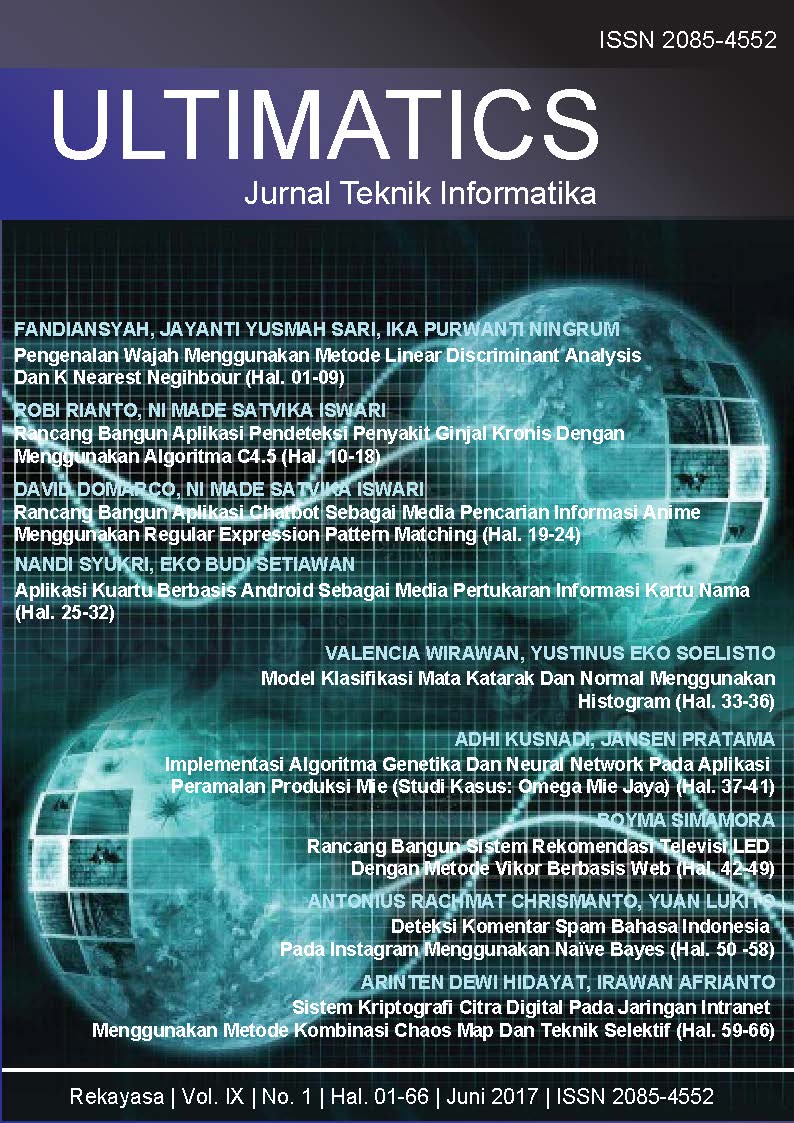Pengenalan Wajah Menggunakan Metode Linear Discriminant Analysis dan k Nearest Neighbor
DOI:
https://doi.org/10.31937/ti.v9i1.557Abstract
Face recognition is one of the biometric system that mostly used for individual recognition in the absent machine or access control. This is because the face is the most visible part of human anatomy and serves as the first distinguishing factor of a human being. Feature extraction and classification are the key to face recognition, as they are to any pattern classification task. In this paper, we describe a face recognition method based on Linear Discriminant Analysis (LDA) and k-Nearest Neighbor classifier. LDA used for feature extraction, which directly extracts the proper features from image matrices with the objective of maximizing between-class variations and minimizing within-class variations. The features of a testing image will be compared to the features of database image using K-Nearest Neighbor classifier. The experiments in this paper are performed by using using 66 face images of 22 different people. The experimental result shows that the recognition accuracy is up to 98.33%.
Index Terms”face recognition, k nearest neighbor, linear discriminant analysis.
Downloads
Downloads
Published
How to Cite
Issue
Section
License
Authors retain copyright and grant the journal right of first publication with the work simultaneously licensed under a Creative Commons Attribution-ShareAlike International License (CC-BY-SA 4.0) that allows others to share the work with an acknowledgement of the work's authorship and initial publication in this journal.
Authors are able to enter into separate, additional contractual arrangements for the non-exclusive distribution of the journal's published version of the work (e.g., post it to an institutional repository or publish it in a book), with an acknowledgement of its initial publication in this journal.
Copyright without Restrictions
The journal allows the author(s) to hold the copyright without restrictions and will retain publishing rights without restrictions.
The submitted papers are assumed to contain no proprietary material unprotected by patent or patent application; responsibility for technical content and for protection of proprietary material rests solely with the author(s) and their organizations and is not the responsibility of the ULTIMATICS or its Editorial Staff. The main (first/corresponding) author is responsible for ensuring that the article has been seen and approved by all the other authors. It is the responsibility of the author to obtain all necessary copyright release permissions for the use of any copyrighted materials in the manuscript prior to the submission.















